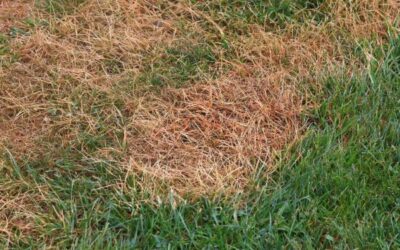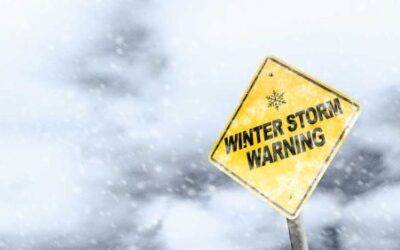Keeping your lawn green and healthy during Virginia’s scorching summers can feel like a full-time job. It’s tempting to overcompensate with water when the sun is blazing down, but the truth is that improper watering can cause more harm than good. From shallow roots to fungus growth, the wrong approach can undo all the effort you’ve put into maintaining your turf. Whether you live in Charlottesville or somewhere else in central Virginia, understanding these common summer watering mistakes can help you avoid costly lawn care issues – and keep your grass looking its best all season long.
1. Watering Too Frequently
One of the most common mistakes homeowners make is watering too often. It might seem logical to water every day when temperatures rise, but frequent shallow watering encourages shallow root systems. Shallow roots are more vulnerable to heat, drought, and disease.
What to do instead:
Aim to water deeply but less frequently – typically 2 to 3 times a week. This promotes strong root development and helps your lawn become more drought-resistant.
2. Watering at the Wrong Time of Day
Timing matters. Watering during the heat of the day means much of the moisture evaporates before it reaches the roots. On the flip side, watering late at night can lead to fungal problems since the water sits on the grass blades for hours without drying.
What to do instead:
Water early in the morning, ideally between 4 a.m. and 9 a.m. This gives your lawn time to absorb the moisture before the heat of the day sets in while also avoiding prolonged dampness overnight.
3. Using a Sprinkler System Incorrectly
Sprinkler systems are convenient, but they can be problematic if not properly managed. Broken heads, uneven coverage, or outdated programming can waste water and leave parts of your lawn stressed and dry while other areas become waterlogged.
What to do instead:
Regularly inspect your sprinkler system for leaks, misaligned heads, and clogs. Reprogram your system for early morning watering and adjust zones based on sun exposure and drainage. Smart irrigation controllers can help automate these adjustments for maximum efficiency.
4. Watering the Leaves, Not the Roots
When water sits on the blades of grass instead of soaking into the soil, it does little to nourish the lawn and can actually invite pests and disease.
What to do instead:
Focus on watering at the soil level. Drip irrigation systems or soaker hoses can be effective alternatives to traditional sprinklers in garden beds or landscaped areas. For lawns, make sure your sprinkler delivers water evenly and close to the ground.
5. Letting the Lawn Go Dormant, Then Watering Inconsistently
Grass naturally goes dormant during extreme drought or heat. It’s tempting to let it go brown to save water, but the real mistake is watering occasionally once it’s already dormant. This confuses the grass and depletes its limited energy reserves.
What to do instead:
Choose a strategy and stick with it. If you want your lawn to stay green all summer, commit to consistent, deep watering. If you’re okay with dormancy, stop watering altogether and wait until cooler weather returns. Just don’t switch back and forth.
6. Overwatering After Fertilizing
Fertilizer needs to be watered in, but using too much water right after application can dilute nutrients or wash them away entirely – wasting product and money.
What to do instead:
Read fertilizer labels carefully and follow the recommended watering instructions. Usually, a light watering is enough to carry nutrients into the soil without leaching them beyond the root zone.
7. Not Adjusting for Rainfall
During Virginia’s stormy summer months, heavy rainfall can provide more than enough moisture for your lawn. Many homeowners forget to turn off their sprinkler system when it rains, resulting in soggy, overwatered soil.
What to do instead:
Install a rain sensor or simply keep an eye on the forecast. If your lawn gets an inch of rain, skip your next scheduled watering. You want to avoid drowning your roots or creating compacted soil conditions.
8. Assuming One-Size-Fits-All for All Lawns
Lawns vary depending on grass type, soil composition, slope, sun exposure, and microclimates around your home. Watering needs will differ accordingly.
What to do instead:
Assess your lawn’s unique needs. Fescue, for example, requires more water in the summer than drought-tolerant varieties like Bermuda grass. Shady areas might stay moist longer than sun-soaked slopes. Tailor your watering plan to match the conditions of your lawn.
9. Forgetting About Soil Health
Compacted or unhealthy soil doesn’t absorb water well, leading to runoff, puddling, or dry patches. Even if you’re watering correctly, poor soil can keep your grass from thriving.
What to do instead:
Aerate your lawn at least once a year to reduce compaction and improve water penetration. Consider top-dressing with compost or using soil conditioners to enrich the soil and support a stronger root system.
Need Help Managing Your Lawn This Summer?
At Jack’s Lawn Care & Landscaping, we understand that summer lawn care in central Virginia can be tricky. Our expert team can assess your lawn’s specific needs and create a custom care plan – including proper watering schedules, soil treatments, and routine maintenance – so you don’t have to guess. Whether you’re dealing with drought stress, overwatering, or just want a lush lawn without the hassle, we’re here to help.
If you’re looking for top-rated lawn care in Charlottesville or reliable landscaping services in Central Virginia, Jack’s Lawn Care & Landscaping has you covered. From expert irrigation support to full-service maintenance, we’re proud to be the go-to choice for homeowners throughout Charlottesville and Albemarle County. Reach out today to schedule your summer lawn consultation and keep your yard looking its best.



